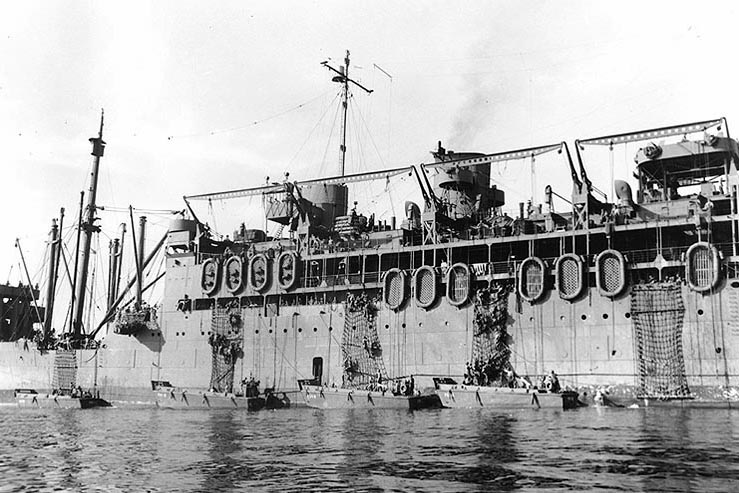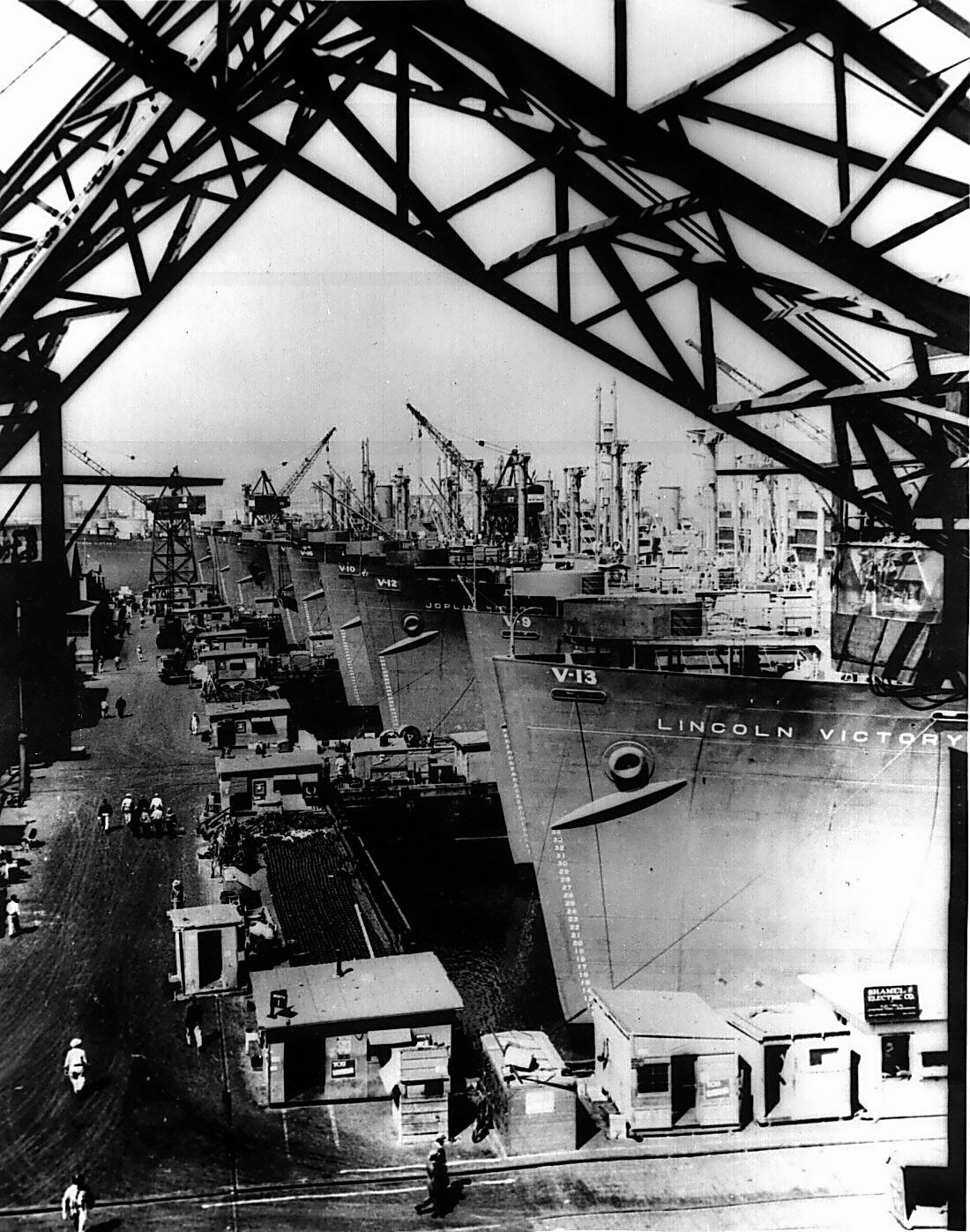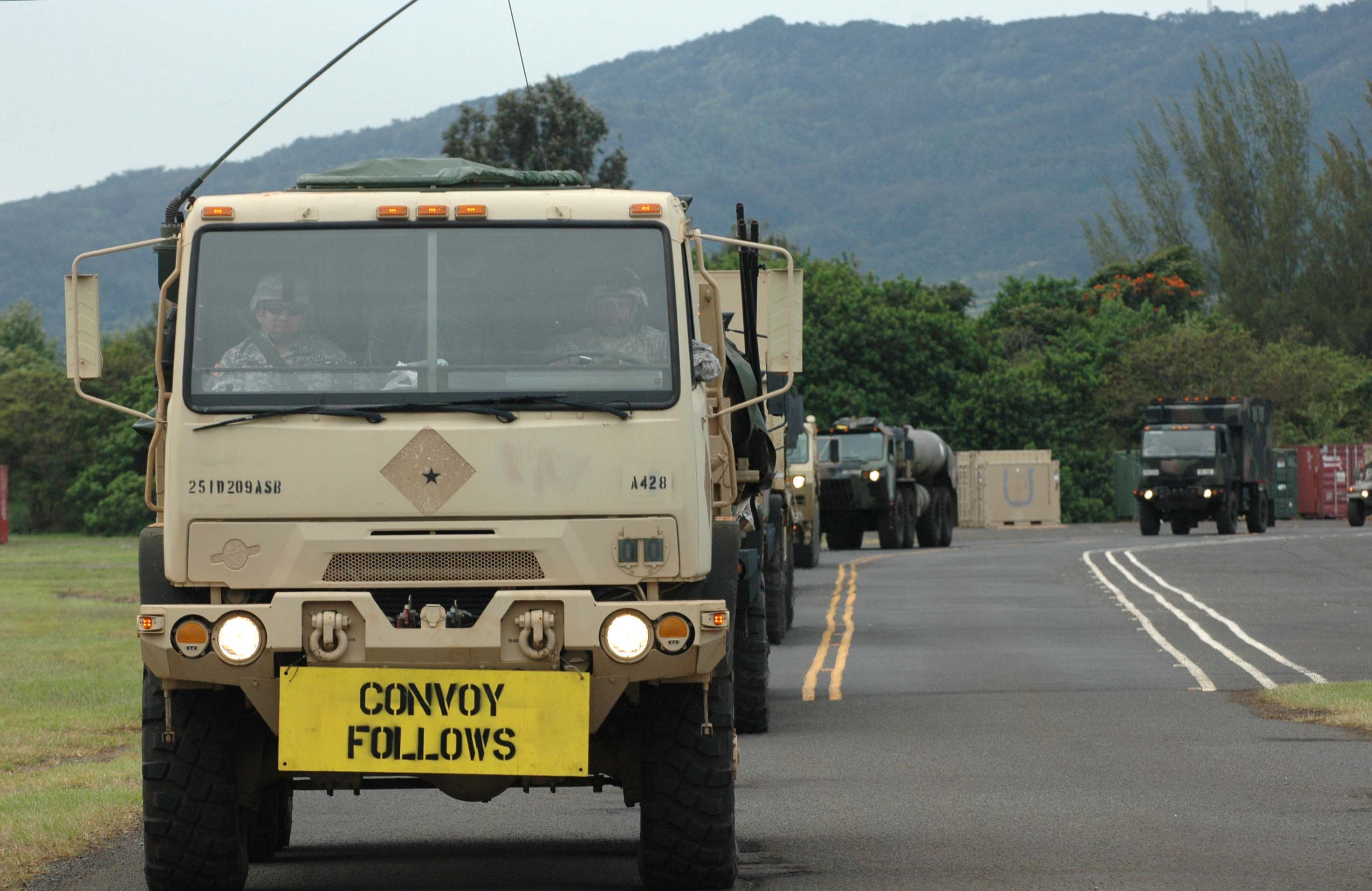|
Troopship
A troopship (also troop ship or troop transport or trooper) is a ship used to carry soldiers, either in peacetime or wartime. Troopships were often drafted from commercial shipping fleets, and were unable to land troops directly on shore, typically loading and unloading at a seaport or onto smaller vessels, either Ship's tender, tenders or barges. Attack transports, a variant of ocean-going troopship adapted to transporting invasion forces ashore, carry their own fleet of landing craft. Landing ships beach themselves and bring their troops directly ashore. History Ships to transport troops were used in antiquity. Ancient Rome used the navis lusoria, a small vessel powered by rowers and sail, to move soldiers on the Rhine and Danube. The modern troopship has as long a history as passenger ships do, as most maritime nations enlisted their support in military operations (either by leasing the vessels or by impressing them into service) when their normal naval forces were deemed ... [...More Info...] [...Related Items...] OR: [Wikipedia] [Google] [Baidu] |
Victory Ship
The Victory ship was a class of cargo ship produced in large numbers by American shipyards during World War II. They were a more modern design compared to the earlier Liberty ship, were slightly larger and had more powerful steam turbine engines, giving higher speed to allow participation in high-speed convoys and make them more difficult targets for German U-boats. A total of 531 Victory ships were built in between 1944 and 1946. VC2 design One of the first acts of the United States War Shipping Administration upon its formation in February 1942 was to commission the design of what came to be known as the Victory class. Initially designated EC2-S-AP1, where EC2 = Emergency Cargo, type 2 (Load Waterline Length between ), S = steam propulsion with AP1 = one aft propeller (EC2-S-C1 had been the designation of the Liberty ship design), it was changed to VC2-S-AP1 before the name "Victory Ship" was officially adopted on 28 April 1943. The ships were built under the Emergency ... [...More Info...] [...Related Items...] OR: [Wikipedia] [Google] [Baidu] |
Type C4 Ship
The Type C4-class ship were the largest cargo ships built by the United States Maritime Commission (MARCOM) during World War II. The design was originally developed for the American-Hawaiian Lines in 1941, but in late 1941 the plans were taken over by the MARCOM. Eighty-one ships were built as cargo or troopships in four shipyards: Kaiser Richmond, California (35 ships), Kaiser Vancouver, Washington (20 ships), Sun Shipbuilding and Drydock in Chester, Pennsylvania (20 ships) and Bethlehem Steel Sparrows Point, Maryland (6 ships). All ships were capable of , driven by a single screw steam turbine generating . Among the variations of the design were the . They were followed post-war by thirty-seven of the larger C4-S-1 class, also known as the ''Mariner'' class. List of Type C4 ships file:USS General G.O. Squier (AP-130).jpg, USS ''General G.O. Squier'', a C4-S-A1 General series C4-S-A1 DWT: 14,863. Built by Kaiser Shipyards at Permanente No. 3 in Richmond, California, for th ... [...More Info...] [...Related Items...] OR: [Wikipedia] [Google] [Baidu] |
Ocean Liner
An ocean liner is a type of passenger ship primarily used for transportation across seas or oceans. Ocean liners may also carry cargo or mail, and may sometimes be used for other purposes (such as for pleasure cruises or as hospital ships). The ''Queen Mary 2'' is the only ocean liner still in service to this day, serving with Cunard Line. The category does not include ferry, ferries or other vessels engaged in short-sea trading, nor dedicated cruise ships where the voyage itself, and not transportation, is the primary purpose of the trip. Nor does it include tramp steamers, even those equipped to handle limited numbers of passengers. Some shipping companies refer to themselves as "lines" and their passenger ships, which often operate over set routes according to established schedules, as "liners". While sharing certain similarities with cruise ships, such as comfort and luxuries for passengers, ocean liners must be able to travel between continents from point A to point B on a ... [...More Info...] [...Related Items...] OR: [Wikipedia] [Google] [Baidu] |
Cunard Line
The Cunard Line ( ) is a British shipping and an international cruise line based at Carnival House at Southampton, England, operated by Carnival UK and owned by Carnival Corporation & plc. Since 2011, Cunard and its four ships have been registered in Hamilton, Bermuda. In 1839, Samuel Cunard was awarded the first British transatlantic steamship mail contract, and the next year formed the British and North American Royal Mail Steam-Packet Company in Glasgow with shipowner Sir George Burns together with Robert Napier, the famous Scottish steamship engine designer and builder, to operate the line's four pioneer paddle steamers on the Liverpool–Halifax–Boston route. For most of the next 30 years, Cunard held the Blue Riband for the fastest Atlantic voyage. However, in the 1870s Cunard fell behind its rivals, the White Star Line and the Inman Line. To meet this competition, in 1879 the firm was reorganised as the Cunard Steamship Company Ltd, to raise capital. In 19 ... [...More Info...] [...Related Items...] OR: [Wikipedia] [Google] [Baidu] |
Attack Transports
Attack transport is a United States Navy ship classification for a variant of ocean-going troopship adapted to transporting invasion forces ashore. Unlike standard troopships – often drafted from the merchant fleet – that rely on either a quay or tenders, attack transports carry their own fleet of landing craft, such as the landing craft, vehicle, personnel (LCVP) or Higgins boat. They are not to be confused with landing ships, which beach themselves to bring their troops directly ashore, or their general British equivalent, the landing ship, infantry. A total of 388 APA (troop) and AKA (cargo) attack transports were built for service in World War II in at least fifteen classes. Depending on class they were armed with one or two 5-inch guns and a variety of 40 mm and 20 mm anti-aircraft weapons. By the late 1960s, 41 of these ships were redesignated with the hull symbol ''(LPA) landing platform, amphibious'', but they all retained their names and ... [...More Info...] [...Related Items...] OR: [Wikipedia] [Google] [Baidu] |
Liberty Ship
Liberty ships were a ship class, class of cargo ship built in the United States during World War II under the Emergency Shipbuilding Program. Although British in concept, the design was adopted by the United States for its simple, low-cost construction. Mass-produced on an unprecedented scale, the Liberty ship came to symbolize U.S. wartime industrial output. The class was developed to meet British orders for transports to replace ships that had been lost. Eighteen American shipyards built 2,710 Liberty ships between 1941 and 1945 (an average of three ships every two days), easily the largest number of ships ever produced to a single design. The Liberty ship was effectively superseded by the Victory ship, a somewhat larger, materially faster, more modern-powered vessel of generally similar design. Over 500 were built between 1943 and 1945. Liberty ship production mirrored (albeit on a much larger scale) the manufacture of "Hog Islander" and similar standardized ship types duri ... [...More Info...] [...Related Items...] OR: [Wikipedia] [Google] [Baidu] |
Attack Transports
Attack transport is a United States Navy ship classification for a variant of ocean-going troopship adapted to transporting invasion forces ashore. Unlike standard troopships – often drafted from the merchant fleet – that rely on either a quay or tenders, attack transports carry their own fleet of landing craft, such as the landing craft, vehicle, personnel (LCVP) or Higgins boat. They are not to be confused with landing ships, which beach themselves to bring their troops directly ashore, or their general British equivalent, the landing ship, infantry. A total of 388 APA (troop) and AKA (cargo) attack transports were built for service in World War II in at least fifteen classes. Depending on class they were armed with one or two 5-inch guns and a variety of 40 mm and 20 mm anti-aircraft weapons. By the late 1960s, 41 of these ships were redesignated with the hull symbol ''(LPA) landing platform, amphibious'', but they all retained their names and ... [...More Info...] [...Related Items...] OR: [Wikipedia] [Google] [Baidu] |
Passenger Ship
A passenger ship is a merchant ship whose primary function is to carry passengers on the sea. The category does not include cargo vessels which have accommodations for limited numbers of passengers, such as the ubiquitous twelve-passenger freighters once common on the seas in which the transport of passengers is secondary to the carriage of freight. The type does however include many classes of ships designed to transport substantial numbers of passengers as well as freight. Indeed, until recently virtually all ocean liners were able to transport mail, package freight and express, and other cargo in addition to passenger luggage, and were equipped with cargo holds and derricks, kingposts, or other cargo-handling gear for that purpose. Only in more recent ocean liners and in virtually all cruise ships has this cargo capacity been eliminated. While typically passenger ships are part of the merchant marine, passenger ships have also been used as troopships and often are commissi ... [...More Info...] [...Related Items...] OR: [Wikipedia] [Google] [Baidu] |
White Star Line
The White Star Line was a British shipping line. Founded out of the remains of a defunct Packet trade, packet company, it gradually grew to become one of the most prominent shipping companies in the world, providing passenger and cargo services between the British Empire and the United States. While many other shipping lines focused primarily on speed, White Star branded their services by focusing more on providing comfortable passages for both upper class travellers and immigrants. Today, White Star is remembered for its innovative vessel and for the losses of some of its best passenger liners, including the wrecking of in 1873, the sinking of in 1909, the Sinking of the Titanic, loss of in 1912, and the wartime sinking of in 1916. Despite its casualties, the company retained a prominent hold on shipping markets around the globe before falling into decline during the Great Depression. White Star merged in 1934 with its chief rival, the Cunard Line, operating as Cunard-Whi ... [...More Info...] [...Related Items...] OR: [Wikipedia] [Google] [Baidu] |
Armed Merchantman
An armed merchantman is a merchant ship equipped with guns, usually for defensive purposes, either by design or after the fact. In the days of sail, piracy and privateers, many merchantmen would be routinely armed, especially those engaging in long distance and high value trade. In more modern times, auxiliary cruisers were used offensively as merchant raiders to disrupt trade chiefly during both World War I and World War II, particularly by Germany. While armed merchantmen are clearly inferior to purpose-built warships, sometimes they have scored successes in combat against them. Examples include East Indiamen mimicking ships of the line and chasing off regular French warships in the Battle of Pulo Aura in 1804, and the sinking the Australian light cruiser in their battle in 1941, although ''Kormoran'' was also destroyed and had to be scuttled. Pre-20th century East Indiamen of various European countries were heavily armed for their long journeys to the Far East. In p ... [...More Info...] [...Related Items...] OR: [Wikipedia] [Google] [Baidu] |
Convoy
A convoy is a group of vehicles, typically motor vehicles or ships, traveling together for mutual support and protection. Often, a convoy is organized with armed defensive support and can help maintain cohesion within a unit. It may also be used in a non-military sense, for example when driving through remote areas. Naval convoys Age of Sail Naval convoys have been in use for centuries, with examples of merchant ships traveling under naval protection dating to the 12th century. The use of organized naval convoys dates from when ships began to be separated into specialist classes and national navies were established. By the French Revolutionary Wars of the late 18th century, effective naval convoy tactics had been developed to ward off pirates and privateers. Some convoys contained several hundred merchant ships. The most enduring system of convoys were the Spanish treasure fleets, that sailed from the 1520s until 1790. When merchant ships sailed independently, a privateer c ... [...More Info...] [...Related Items...] OR: [Wikipedia] [Google] [Baidu] |
U-boat
U-boats are Submarine#Military, naval submarines operated by Germany, including during the World War I, First and Second World Wars. The term is an Anglicization#Loanwords, anglicized form of the German word , a shortening of (), though the German term refers to any submarine. Austro-Hungarian Navy submarines were also known as U-boats. U-boats are most known for their unrestricted submarine warfare in both world wars, trying to Commerce raiding, disrupt merchant traffic towards the UK and force the UK out of the war. In World War I, Germany intermittently waged unrestricted submarine warfare against the United Kingdom, UK: a first campaign in 1915 was abandoned after strong protests from the US but in 1917 the Germans, facing deadlock on the continent, saw no other option than to resume the campaign in February 1917. The renewed campaign failed to achieve its goal mainly because of the introduction of Convoys in World War I, convoys. Instead the campaign ensured final defeat ... [...More Info...] [...Related Items...] OR: [Wikipedia] [Google] [Baidu] |









